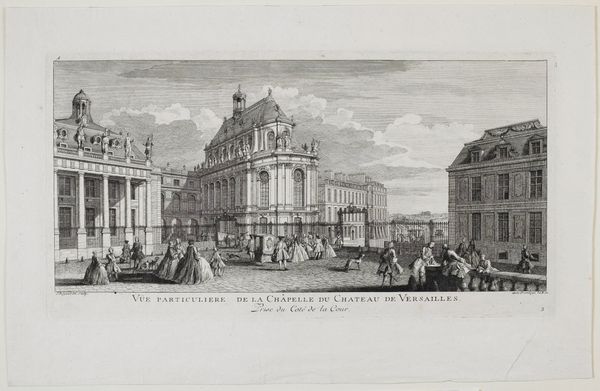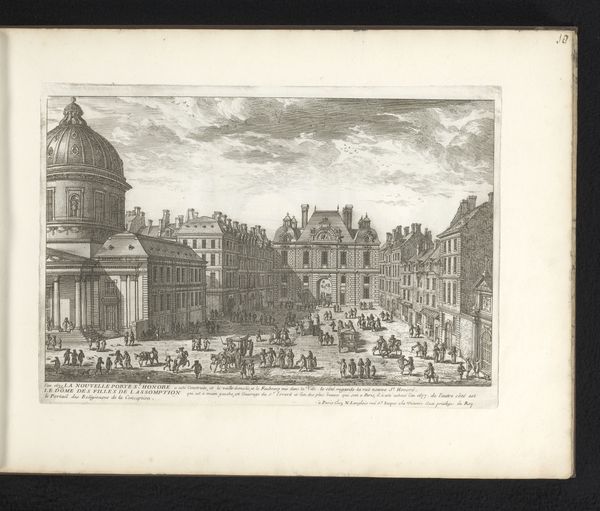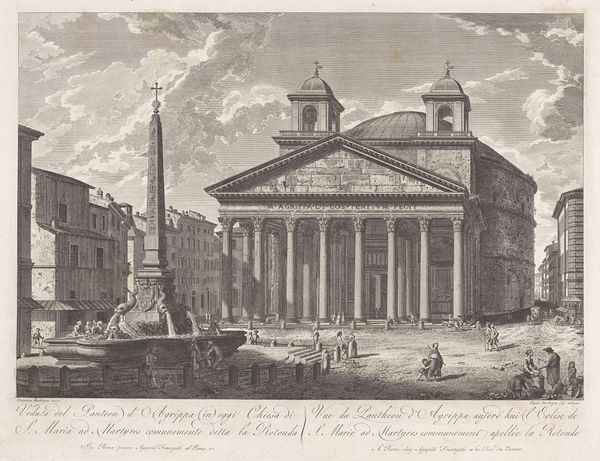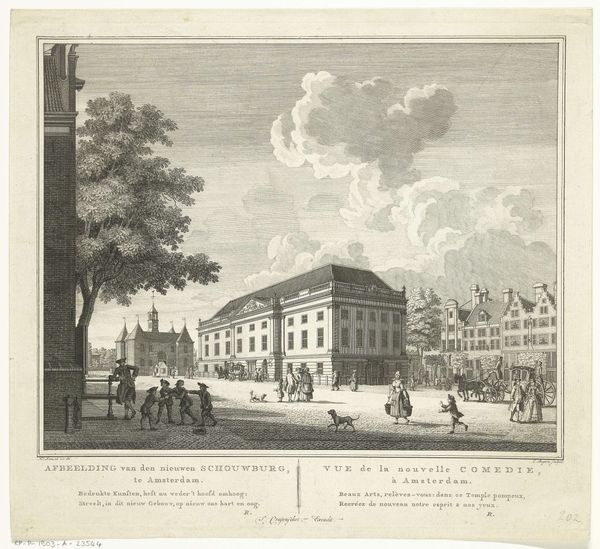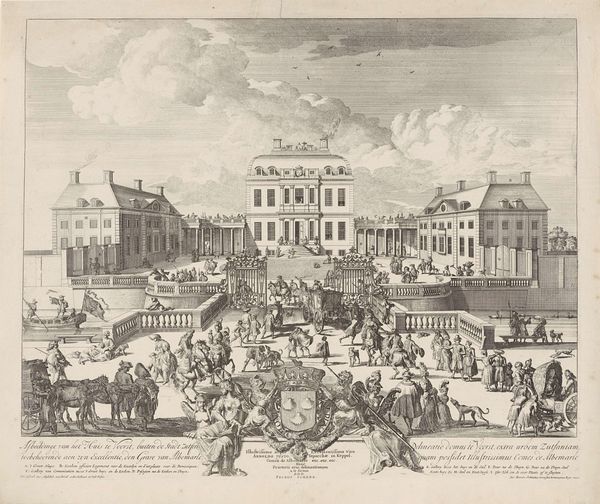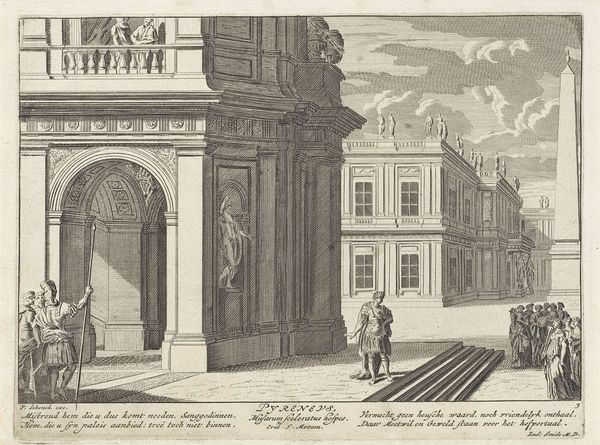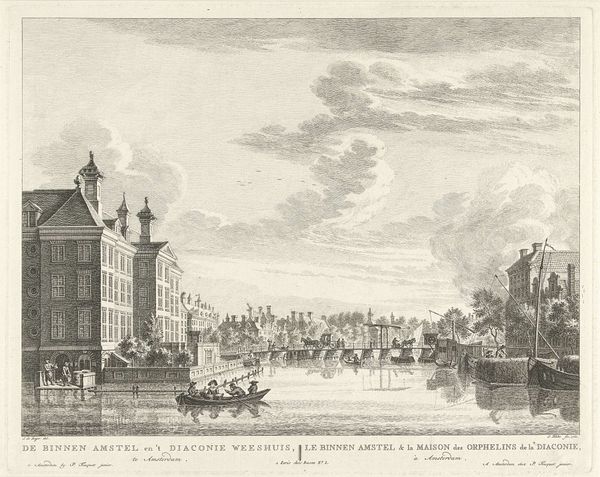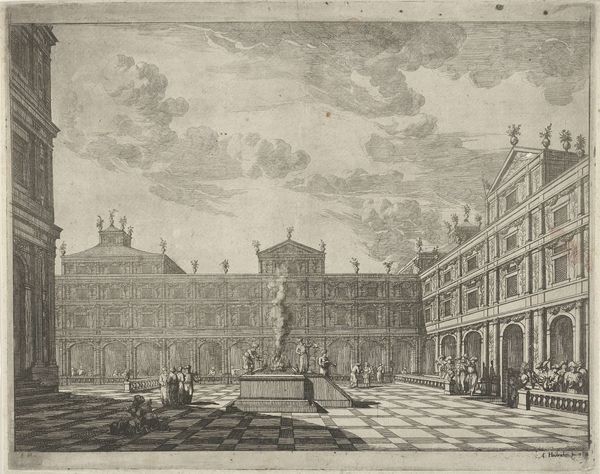
Triomfboog voor de intocht van koning Willem III te Den Haag, 1691 1691
0:00
0:00
bastiaenstopendael
Rijksmuseum
print, engraving, architecture
#
aged paper
#
baroque
# print
#
old engraving style
#
line
#
cityscape
#
history-painting
#
engraving
#
architecture
#
realism
Dimensions: height 370 mm, width 478 mm
Copyright: Rijks Museum: Open Domain
Bastiaen Stopendael created this etching in 1691, depicting the triumphal arch built for King William III's arrival in The Hague. The image opens a window into the political theater of the Dutch Republic. Triumphal arches, historically associated with Roman emperors, were powerful tools for legitimizing authority. Here, the arch serves to celebrate William of Orange, a key figure in the ongoing power struggles within Europe. Stopendael's print immortalizes this event, and also disseminates the symbolic power of the monarchy to a wider audience. Examining the iconography – the statues, inscriptions, and allegorical figures – can reveal the specific messages the Dutch Republic sought to convey about William's reign. Details of the arch and the surrounding crowd offer insights into the social and political climate of the time. Historical archives, political pamphlets, and studies of Dutch political history can illuminate the complex interplay between art, power, and public opinion in the 17th century.
Comments
No comments
Be the first to comment and join the conversation on the ultimate creative platform.
